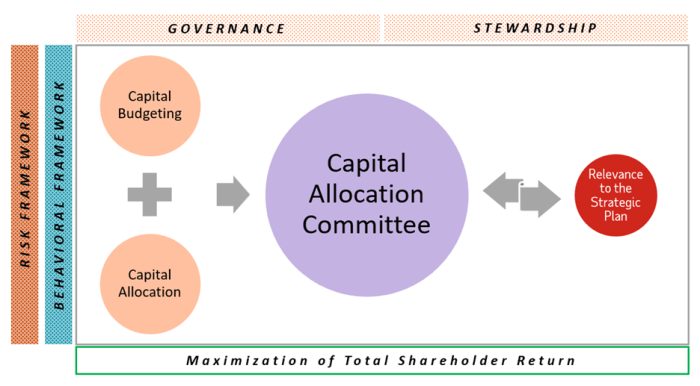
Embark on a journey into the realm of Capital Allocation Strategy, where deliberate decisions pave the path for business success and expansion.
Delve deeper into the intricacies of allocating capital effectively and the pivotal role it plays in fostering growth and innovation.
Capital Allocation Strategy

A capital allocation strategy refers to the process through which a company decides how to distribute its financial resources among different investment opportunities or projects. It involves evaluating potential investments based on factors such as risk, return, and alignment with the company’s overall objectives.
Types of Capital Allocation Strategies
- Internal Growth: Investing capital back into the business to fund expansion, research and development, or new product launches.
- Acquisitions: Using capital to acquire other businesses in order to expand market share or diversify offerings.
- Share Buybacks: Repurchasing company shares to return capital to shareholders and boost stock prices.
- Dividend Payments: Distributing profits to shareholders in the form of dividends.
Importance of a Well-Defined Capital Allocation Strategy
A well-defined capital allocation strategy is crucial for business growth as it ensures that resources are allocated efficiently to maximize returns and drive long-term value creation. It helps companies prioritize investments, manage risks, and maintain financial discipline.
Determining Capital Allocation Strategies
- Assessing Investment Opportunities: Companies evaluate potential projects or acquisitions based on factors such as expected returns, risk profiles, and strategic fit.
- Setting Priorities: Establishing clear criteria for capital allocation to prioritize investments that align with the company’s goals and objectives.
- Monitoring Performance: Regularly reviewing the performance of investments to assess their impact on overall business growth and adjust allocation strategies accordingly.
Factors Influencing Capital Allocation

Capital allocation decisions are influenced by a variety of factors, both internal and external, that play a critical role in shaping an organization’s strategy.
Internal Factors
Internal factors such as the company’s financial position, growth prospects, and existing capital structure have a significant impact on capital allocation decisions. The management team must assess the company’s current financial health and determine how much capital is available for allocation.
External Factors
External factors like economic conditions, industry trends, and regulatory environment also play a crucial role in capital allocation. These external factors can create opportunities or pose challenges that need to be considered when allocating capital.
Role of Risk Assessment
Risk assessment is a key component of capital allocation strategies. By evaluating the potential risks associated with different investment opportunities, companies can make more informed decisions about where to allocate their capital. This helps mitigate potential losses and maximize returns.
Market Conditions Impact
Market conditions, such as interest rates, inflation, and market volatility, can significantly affect capital allocation decisions. Companies need to adapt their strategies based on prevailing market conditions to optimize their capital allocation and achieve their financial objectives.
Capital Growth Strategies
When it comes to achieving capital growth, the relationship with capital allocation is crucial. Effective capital allocation strategies play a significant role in determining the growth trajectory of a business. By allocating resources wisely and strategically, businesses can maximize their returns and fuel their growth.
Examples of Effective Capital Allocation Strategies
- Investing in research and development to create innovative products and services that cater to market demand.
- Expanding into new markets or diversifying product offerings to capture a broader customer base.
- Acquiring complementary businesses to strengthen market position and drive revenue growth.
The Role of Innovation in Driving Capital Growth
Innovation plays a crucial role in driving capital growth within a business. By constantly innovating and adapting to changing market trends, businesses can stay ahead of the competition and attract more customers. Innovation leads to the development of new revenue streams and enhances the overall value proposition of the business.
Measuring the Success of Capital Growth Strategies
Measuring the success of capital growth strategies involves tracking key performance indicators (KPIs) such as revenue growth, profit margins, return on investment (ROI), and market share. By analyzing these metrics, businesses can evaluate the effectiveness of their capital allocation decisions and make adjustments as needed to ensure sustainable growth.
In conclusion, mastering the art of capital allocation is key to unlocking the full potential of a business and ensuring sustained growth in the dynamic market landscape.
FAQ
What is the importance of a well-defined capital allocation strategy?
A well-defined strategy ensures that resources are allocated efficiently, maximizing returns and driving sustainable growth.
How do companies determine their capital allocation strategies?
Companies typically base their decisions on factors like financial goals, risk assessment, and market conditions to create a balanced strategy.
What role does innovation play in driving capital growth within a business?
Innovation is crucial for capital growth as it enables companies to stay competitive, adapt to changing market demands, and foster long-term success.





